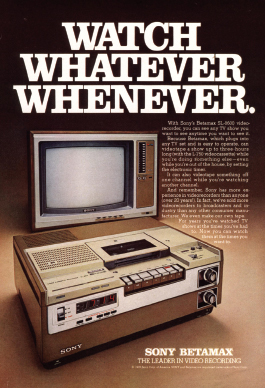Home Video and Recording
Printed Page 246
Home-video technologies have evolved over the past few decades. In 1975–1976, the introduction of videocassettes and videocassette recorders (VCRs) enabled viewers to tape-record TV programs and play them back later. The VHS (Video Home System) introduced by JVC quickly became the consumer standard (while Sony’s Beta system became the industry and news standard). Today, however, analog VHS has surrendered to digital DVD—which in turn has expanded to include Internet downloading, high-definition DVD pictures and players, and Blu-ray DVDs.

In 2010, more than 90 percent of American homes were equipped with DVD players. Nearly 40 percent of U.S. homes also had DVRs (digital video recorders), which let users download onto the DVR’s computer memory specific shows or even types of shows that appear on any channel. The newest versions of DVRs are also recordable—like VCRs—and allow users to make DVD collections of their favorite shows. Some critics argue that DVRs have shattered our notion of prime-time television because viewers can now watch whatever show they like at any time.
While offering greater flexibility for viewers, DVRs also provide a means for advertisers to watch the watchers—by feeding information to corporations about what each household is viewing. This has changed the ways TV ratings are compiled and advertising dollars are divided. A.C. Nielsen Market Research, which provides the main audience ratings service for television, is trying to figure out how to track Americans’ TV habits—including what they watch, when, and where (such as on their cell phones, TV sets, or computer monitors). In 2009, the DVR pioneer company, TiVo, challenged Nielsen’s service by offering not only its own data from national TV audiences but daily "second-by-second" information about the shows and ads that people watch on a TiVo brand DVR. This kind of technology does raise concerns among some lawmakers and consumer groups over having our personal viewing and buying habits tracked by advertisers and marketers.